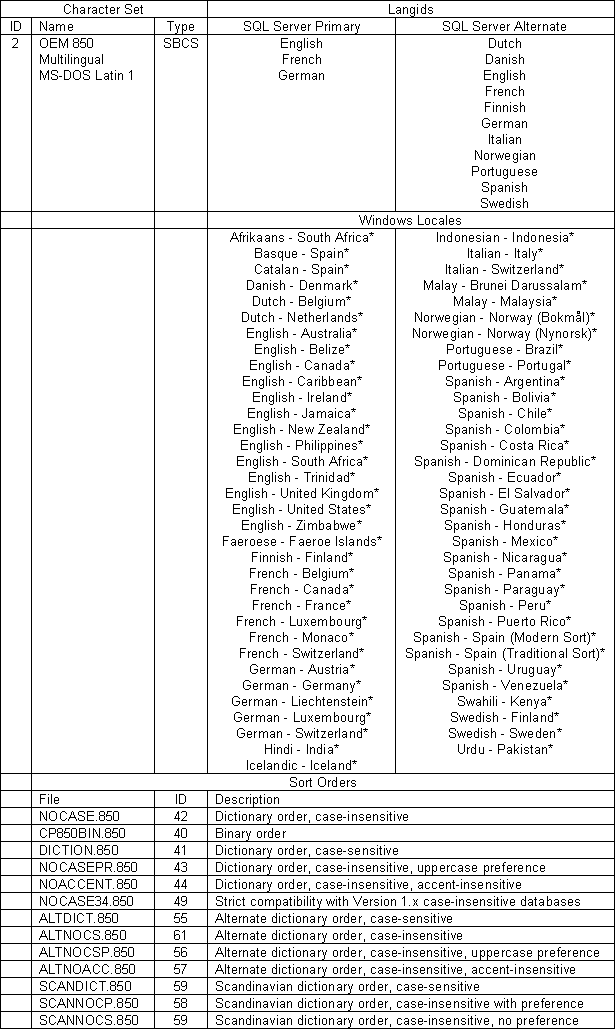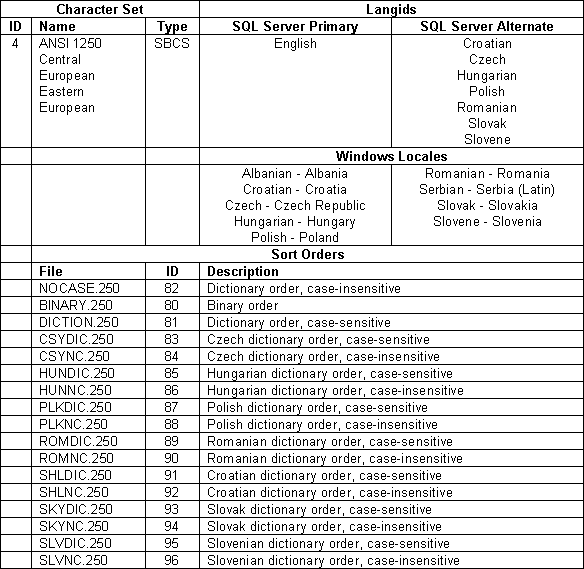
The following tables will help you determine how to choose a character set, sort order, language, and locale for an international application. The tables assume you are developing Windows applications using an ANSI or DBCS code page. For specific descriptions of each code point supported in these code pages, see Developing International Applications for Windows 95 and Windows NT.
Character Set ID
SQL Server's unique identifier for character sets used in the syscharsets table.
Character Set Name
Column that lists common names used to refer to the character set by SQL Server and other sources.
Character Set Type
Either SBCS for single-byte character sets or DBCS for double-byte character sets.
Primary Langids
Column that lists the SQL Server primary langids supported by the code page.
Alternate Langids
Column that lists any alternate langids supported for this code page by Instlang.sql.
Windows Locales
Table that lists Windows NLSAPI locales that are compatible with this code page. Locales marked with an asterisk can be used only with the character set if ODBC client-side character set conversion is enabled.
Sort Orders
A list of each sort order that can be supported for the code page.
Sort Order File
The name of the file SQL Server uses to define the sort order. These files are located in SQL Server's charsets subdirectory.
Sort Order ID
The unique ID assigned by SQL Server to identify the sort order in the syscharsets table.
Sort Order Description
The descriptive text used for the sort order by the SQL Setup program.
Code Page 1250 (Eastern European)

Code Page 1251 (Cyrillic)
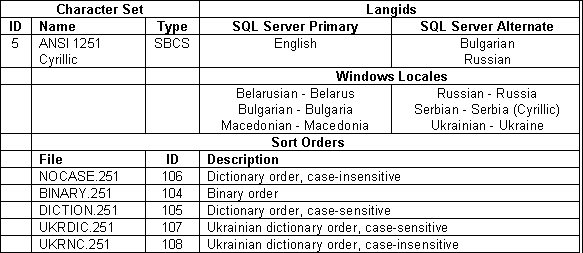
Code Page 1252 (Latin 1)
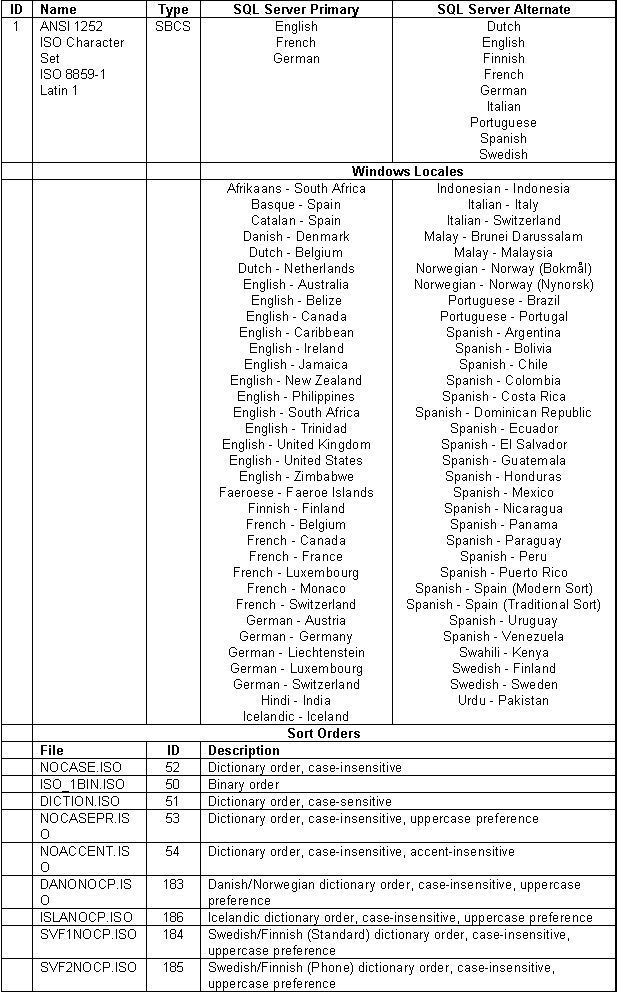
Code Page 1253 (Greek)

Code Page 1254 (Turkish)

Code Page 1255 (Hebrew)

Code Page 1256 (Arabic)
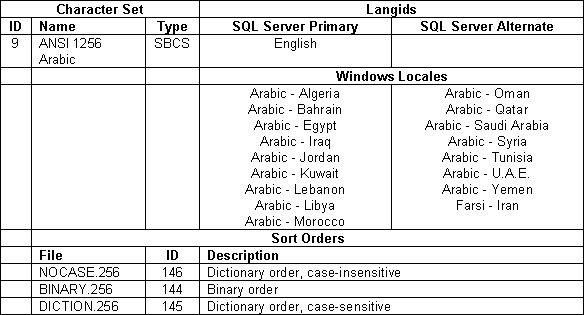
Code Page 1257 (Baltic)
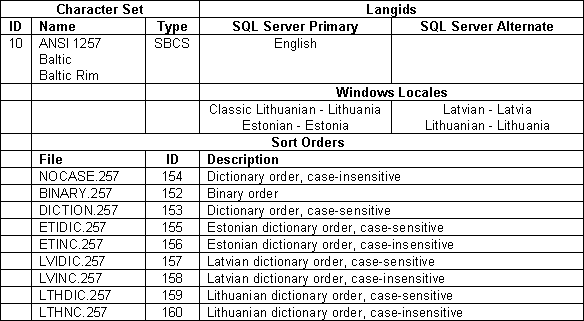
Code Page 932 (Japanese)

Code Page 936 (Chinese Simplified)
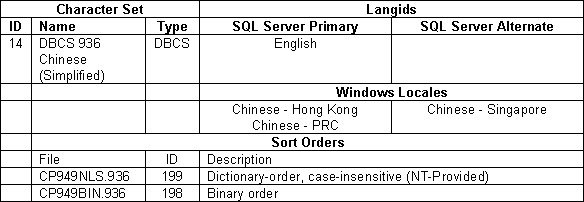
Code Page 949 (Korean)

Code Page 950 (Chinese Traditional)

Code Page 437 (US English)
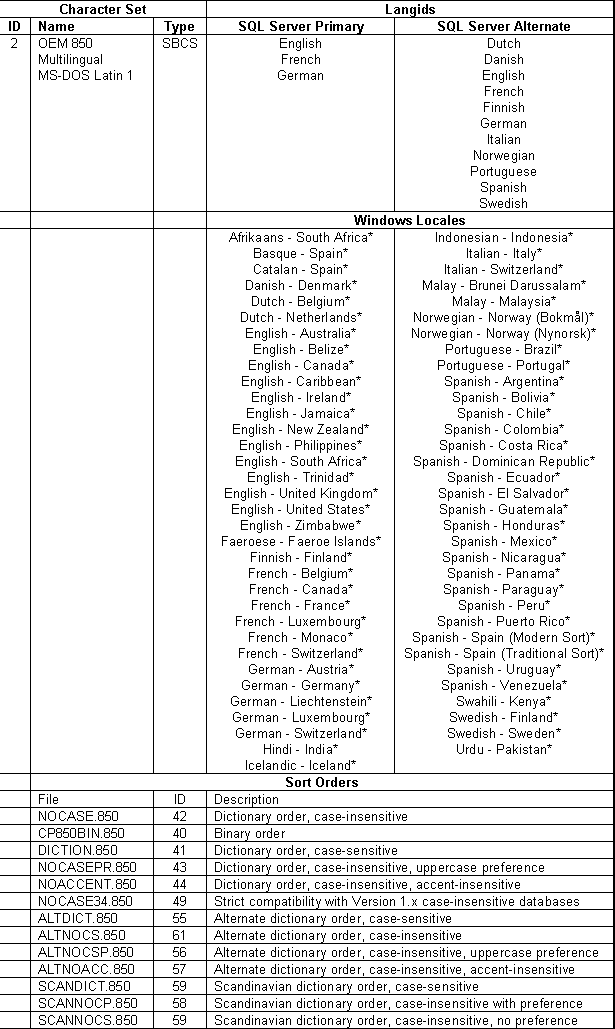
Code Page 850 (Multilingual)
